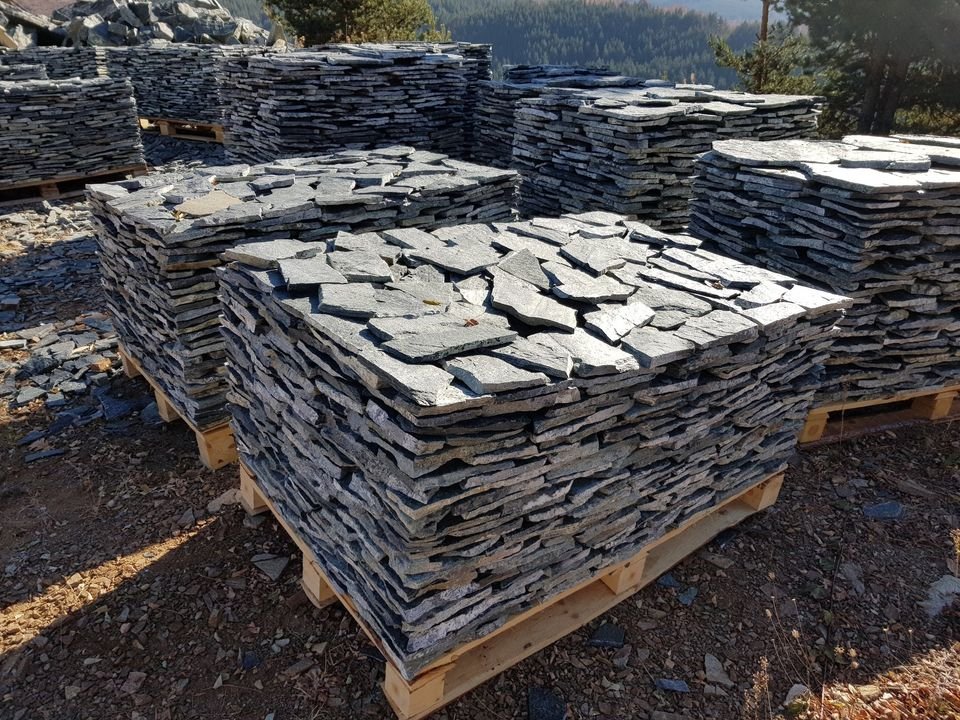When you do some research in designing the masonry aspects of your landscape, you may come across the majesty of bluestone. The incredible colors and textures provided by bluestone can make a landscape look even more elegant. However, there are some drawbacks to natural bluestone as well. Before you make any decisions about bluestone for your patio, pool deck, walkways, or driveway, here’s how a garden center in Hudson Valley, NY can help you decide if bluestone is right for a landscape.
Related: BLUESTONE, LIMESTONE, AND OTHER STONE OPTIONS TO CONSIDER IN ULSTER COUNTY AND SULLIVAN COUNTY, NY
What Exactly Is Bluestone?
Bluestone is a type of flagstone. In geological terms, bluestone can be composed of several types of rock including basalt, limestone, and even slate. The name refers to the bluish hues that come through in the various shades of gray. For many landscaping projects, bluestone can provide a wonderful transition between the rocks in the natural landscape and the homes, particularly those in the Mid-Atlantic and New England regions where the stone is quarried.
The Advantages of Bluestone
Bluestone is one of the most popular landscaping stones simply because it is absolutely beautiful. Its main attraction is its uniqueness. Even from the same quarry, no two slabs will be the same. The stone comes in a variety of bluish tones often with hints of brown, tan, or rust that give each stone so much character. This also makes it somewhat easier to add on to an outdoor space in the future: since there’s so much variation in the stones, you’ll never have to worry about finding a perfect match.
You have likely seen many examples of bluestone throughout the region, making up the main structures of churches, bridges, and many old buildings in cities as well. With bluestone, you can transfer some of that historical appeal to your paved pedestrian surfaces.
Bluestone is a durable stone.. There’s a good reason why all those old buildings and other structures that were built with bluestone are still around.
The Disadvantages of Bluestone
Bluestone is becoming more expensive. Despite that, you’ll see that bluestone is still one of the most sought after masonry materials for landscapes, homes, and more.
Bluestone consistency cannot be guaranteed. Just like any other natural stone used in landscapes and homes, you never know what kind of inconsistencies lay inside. The only way to find out the integrity of natural stone is to, unfortunately, destroy it. Quarried bluestone may be cut to a perfect shape, but there is no way to tell if it has some imperfections.
Since bluestone is a sedimentary stone made of many thin layers. This makes bluestone vulnerable to heavy weights and traffic, such as the driveway. Therefore, we recommend bluestone for pedestrian applications only.
Alternatives to Natural Bluestone
Masonry material manufacturers have been taking inspiration from natural bluestone to create beautiful pavers and blocks that mimic the look of bluestone, but without the disadvantages. These bluestone alternatives are more versatile. You can use them in any pedestrian application as well as your driveway.
Browsing A Wide Selection
Once you visit your local garden center, you’ll be able to see the wide selection of natural bluestone slabs as well as bluestone alternatives in pedestrian and driveway-rate pavers as well as wall units. You may even opt for a combination: natural bluestone in some locations, and bluestone alternatives in others. Plenty of colors, shapes, textures, and sizes can be arranged in practically any pattern or configuration that your landscape needs to look amazing for years to come!


